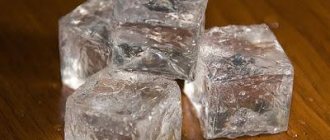The principle of operation of a biofireplace
The biofireplace is made in the form of a simple system, functioning by burning a new type of liquid fuel mixture - bioethanol. Its energy qualities must be taken into account when creating bio-fireplaces with your own hands. The simplicity of the design and the availability of all materials will not require the performer to spend significant effort during its production. And the costs of purchasing materials will be insignificant. As a result, the master will receive an unusual piece of furniture. Which in turn will create warmth in the house from a real and living fire.
The device is made of simple 4 main blocks:
- The base is a frame structure for fixing working units;
- a safety screen made of refractory glass to protect the room from the possible spread of fire;
- consumable container for bioethanol fuel mixture;
- burner device for ignition and conducting the combustion process.
If necessary, a structural portal is installed near a self-made biofireplace. Which allows you to fit it into the interior as completely as possible. Due to their popularity, industry, both domestic and Western, has launched the production of biofireplaces. There are plenty of them in the retail chain today, but their cost is quite high. As a result, many users decided to make it themselves.
What is a biofireplace
The biofireplace is the latest heating unit that can be installed in any room. Installation is extremely simple and does not require labor-intensive installation. During its operation, the unit does not emit smoke, soot, ash or other combustion products. A biofireplace hood is not required, because the flame is formed from organic biofuel.
Photo: Biofireplace in the apartment
For a desktop model, you will need a minimum of free space; the device can be placed in any corner of the room, near a wall, on a table or shelf. Often the unit is placed in the central part of the room. In addition to numerous advantages, there are also disadvantages of a biofireplace. For example, this device cannot be used for heating; it produces too little heat.
Types and subtypes of biofireplaces
Before starting to assemble a biofireplace with your own hands, the master will have to choose its location. This is not difficult to do, since they are produced in a wide variety of types. According to this parameter, they are divided into 4 key variations: Floor-standing, wall-mounted, decorative tabletop and built-in surfaces.
In addition, such heaters are divided into subtypes:
- Rectangular configuration is the most common design;
- end - modules that are installed in the end section of the room wall;
- through - mounted in wall partitions and architectural decorations, for example, columns;
- corner ones are the most compact placement option, which is especially suitable for making a bio-fireplace with your own hands in a small apartment.
The classification of biofireplaces is absolutely logical. Some modifications have stylistic versatility. They can be successfully integrated both into a traditional interior and into an unusual “loft” or “high-tech” interior.
Wall devices
These biofireplaces are made in the form of a large flat structure that is fixed to the wall. The front panel is covered with heat-resistant glass for safe operation. The side panels are designed in a similar way. The back wall is made of heat-resistant building material, most often metal.
The design is simple to install. It is mounted on fasteners inserted into the wall. The structure is absolutely harmless to use. Because when biofuel burns, the back wall and bottom of the structure heat up very little. Therefore, they are not able to become a source of ignition or cause a burn to a person who accidentally touches the surface of the heater.
Floor bio fireplaces
This option is placed on the flooring or on a compact podium. If, technologically and according to the design characteristics of the model, the bottom does not heat up during operation of the housing device. Then such a model is placed on any suitable flat floor plane.
For many variations of the floor type, a mobile version of the heater is available. In this case, it can be freely rearranged to any convenient free place. These non-insulated fireplaces can be used to heat a room. True, only for a short period.
Desktop devices
These models are small-sized versions of floor samples. They are located on shelves, tables or specialized stands. Where their small size allows them to decorate the interior.
It is difficult to classify them as full-fledged fireplaces, for the reason that they are very compact. But this modification has its own advantages - they are very mobile. They are easy to move from one place to another. They are highly functional and quite easy to use.
Built-in models
Built-in bio-fireplaces look very organic. Such devices are installed in a specially prepared cavity in the wall. They stand out in that their front panel is made in the form of a continuation of the wall and is visible only from the front side.
The design of bio-fireplaces “lanterns” is made with a convex front surface. They protrude slightly from the side of the building, which makes them quite unusual and tempting. Installing such a bio-fireplace into the interior of a room is much more difficult than a simple wall structure. Therefore, this installation design is only available to high-quality specialists.
Before making a bio-fireplace of this modification, you need to very responsibly select a seat for it. Since moving such a device in the future will become quite expensive and difficult.
Placement in the interior
In modern stores there is simply a gigantic selection of such devices, so you can choose a decorative device for almost any interior. The most important decision remains the choice of the type of device: floor-standing, table-top, wall-mounted, corner.
Eco-friendly interior in all its manifestations
It is advisable that even at the project stage, when carrying out repair work, the place for the fireplace should be determined. Well, in case of a spontaneous purchase, you can always take into account the following recommendations:
- If you are considering buying a wall-mounted fireplace, then you need to choose the main wall of the room, having first gotten rid of other accent elements: TV, paintings, photographs, posters. Placing a TV above a bio-fireplace is not only ridiculous from a design point of view, but also not entirely safe. Hang the TV on an adjacent wall or place it on a dresser in another corner.
- For large living rooms, you can choose a bold, eye-catching device design that uses a variety of bright colors. This design of the bio-fireplace will emphasize its main role in the interior of a large living room. If the room has modest dimensions, it is advisable to choose a device with a more discreet design. An option with a large amount of transparent fire-resistant glass is perfect. A living room with a biofireplace in a modern style, the design of which uses simple elements of glass and metal, will look very original, interesting, and fresh.
- The wall-mounted biofireplace is the main accent, so the entire wall should be at its disposal. If the room has already been decorated, choose a floor-mounted bio-fireplace that will harmoniously fit into the finished interior. The desktop version can be placed in any room, on any table. An excellent option would be an attached type of bio-fireplace.
Hanging bio-fireplace placed on the wall
- If you choose an eco-fireplace at the stage of forming the design of the room, pay attention to the proximity of other interior elements to this device. Proximity to curtains, carpets, textiles, and flammable objects may be unsafe. In rooms with a lot of furniture, a biofireplace can also become an unnecessary item. Remember, a biofireplace is not only an original decorative device; its functionality includes working with real fire, which can be extremely dangerous. The presence of fire in the house requires a responsible, serious attitude to the operation of such devices.
- Note that modern interiors can often be built on the basis of the main highlight in the form of a bio-fireplace. It can be not only wall-mounted or floor-mounted, it is possible to place it directly in the wall. The design of a room with a bio-fireplace built into the wall can be made for both large and small rooms. The dimensions of the room do not play a special role here; the main point is a properly built ventilation and air conditioning system. To ensure normal combustion, oxygen is required, which must be continuously supplied to the surrounding atmosphere.
- When choosing a wall-mounted bio-fireplace, you should take care of its appearance, because the device must fit into the interior. For classic interiors, this is easy to do, since there are plenty of devices made in the form of imitation of classic fireplaces with wood or coal. These devices even have a special sound unit that provides sound accompaniment. For modern interiors in minimalist styles, choosing a device is also not difficult, since there are a lot of models made of glass and iron. Note that you can always complement the appearance of the fireplace yourself by adding a little filler to the portal: natural stones, sand, ceramic parts.
Home office interior
Thus, before buying something that is not the cheapest and most beautiful, you should take the time to think about where you can put it. After all, an unsuccessfully hung bio-fireplace under the TV in the living room is unlikely to add beauty to it; rather, on the contrary, it will introduce confusion and turmoil.
Good to know: Decorative accessories for biofireplaces: coals, stones, logs
Features of biodiesel production
The meaning of “bio” in the phrase “biofuel” is explained by the fact that exclusively natural renewable raw materials are used for the production of this fuel composition. Due to this, it is environmentally friendly and completely biodegradable.
The fundamental components used to create this fuel are grass and grain crops, with a large amount of starch and sucrose. Corn and cane are rightfully recognized as the best raw materials.
Traditional flammable composition of fuel liquid:
- Bioethanol - conventional ethanol produced by processing plant feedstock, approximately 95%;
- Methyl ethyl ketone (butanone) is a chemical compound of ketones, a transparent volatile liquid with an acetone odor, about 1%;
- purified water, approximately 4%.
In addition to the noted ingredients, denatonium benzoate is added to the liquid fuel composition, which is a crystalline substance, whitish in color, and has a bitter taste. This additive is intended to prevent the use of alcohol-containing biofuels as strong drinks.
Biofuel is produced in various brands, its composition may vary slightly, but basically, the above ingredients remain constant in it. Today the price of such fuel remains high. Fuel consumption directly depends on the number of burners and the performance of the biofireplace. For approximately 3 hours of heating, a 4 kW combustion unit consumes about a liter of fuel per hour. Its cost on the Russian market, for example, for the popular type SLKamin STANDART, costs 300 rubles per 1 liter
Fuel selection criteria
The biofireplace runs on special fuel, which is based on ethanol. It is essentially unrefined alcohol. Only flammable liquids with the prefix “bio” can be poured into the fuel tank. This condition is due to the fact that biological fuel does not emit toxic substances during combustion, so its use is safe for health.
The basis of biofuel is ethyl alcohol
Various brands of fuel are produced from plant components (beets, potatoes, corn, etc.), as well as wood shavings. Biofuel is a colorless, odorless liquid. When burned, it decomposes into water and carbon dioxide. Combustion is possible only if there is access to oxygen. To extinguish the fireplace, simply close the lid or damper of the fuel tank, which ensures the safety of using this liquid at home.
Pure ethanol produces a blue flame when burned, similar to a burning gas. The appearance of such a flame does not resemble live fire, so manufacturers add special coloring additives to ethanol. To simulate crackling, sea salt is added to biofuel.
This is interesting! Manufacturers add crystalline bitrex powder to biofuel, which imparts bitterness to the liquid. It is designed to exclude the possibility of taking this alcohol-containing liquid orally.
When choosing biofuel, pay attention to its quality and safety. A quality product is equipped with a certificate, which must be checked upon purchase. An important criterion for choosing a flammable liquid is the amount of heat generated. When purchasing, be sure to check the originality of the packaging and the expiration date of the product.
You can purchase biofuel in specialized stores in containers ranging from 1 to 5 liters. The most popular brands at present are:
- Planika Fanola;
- Bioheat;
- Kratki;
- FireBird;
- Direct Cheminee.
It is important! Filling the fireplace fuel tank must be done carefully so that liquid does not get on the outside. If this happens, the biofuel is thoroughly wiped off to prevent the surface around the fireplace from catching fire.
Homemade biofuel
On average, a device with a small burner consumes approximately 0.5 liters of biofuel per hour. This is a fairly expensive liquid, so making it yourself will help reduce costs a little. Homemade biofuel is no less effective, but at a lower cost than the industrial version.
To make biofuel, you need two ingredients:
- Ethanol with an alcohol content of at least 96%.
- Refined gasoline.
The components in the ratio of 50-80 g of gasoline per 1 liter of alcohol are mixed until smooth just before lighting the fireplace. It is impossible to leave such a flammable liquid in the tank, since gasoline quickly separates from the alcohol.
At the beginning of combustion, homemade biofuel gives off a slight smell of alcohol, but after a few minutes it disappears. If you drop a little essential oil on artificial firewood, you can get a pleasant aroma in the room.
A false fireplace will fit perfectly into the interior of any home. Instructions for its manufacture are presented here:
Do-it-yourself biofireplace: assembly recommendations, step-by-step instructions
Thanks to its simple constitution, it is possible to create a bio-fireplace yourself. Moreover, it will ultimately cost several times less than a finished structure. A significant advantage of such a homemade design is that it can become a unique author’s model. Before you start making your own bio-fireplace, you should prepare an accurate drawing with detailed details of all working units. You can do it yourself if the user has enough experience or find an interesting model on the Internet.
Materials for the production of biofireplaces
An excellently designed bio-fireplace design will greatly simplify the work of assembling the structure for the craftsman in the future. To make a bio-fireplace, I will require the following building materials:
- Frame made of metal parts.
- Glass for screen. It is preferable to choose a tempered heat-resistant option, although for many household options ordinary glass will also be suitable. The thickness must be at least 5 mm. You can buy one large sheet and cut it into parts yourself, or you can do this in a glass workshop, indicating the dimensions to professionals. This is a more preferable option, since there you can order additionally, polish the edges and consult with specialists on the issue of mounting the screen.
- Burner device
- The fuel block, for which, as a rule, a steel tank is selected.
In certain models, the liquid fuel tank, housing and microburner are made in a separate independent structure, but it is still safer to make them separately.
Fuel block
It is considered a key component of the system. Its design should not allow the liquid fuel mixture to leak out. Before you make a bio-fireplace with your own hands, you need to take care of the tightness of the fuel block, which must be made at the highest quality level. According to existing drawings, a fuel tank is made by cutting a sheet of stainless metal and connecting it together. To form a system for uniform distribution of the combustion source, you will need a steel mesh installed on the fuel tank.
According to design requirements, the cells in the mesh must be small or the mesh can be folded several times. The fire will approach the matrix from the wick, for which you can use ordinary reliable fabric twine. It combines the fuel tank with the mesh, bringing the torch out. To decorate the heater, pebbles or ceramic materials are used, for example, to imitate wood logs. Such elements are loaded inside the combustion structure, directly onto the mesh. A fuel tank is mounted in the box. In the largest systems, a number of combustion blocks are used.
Step-by-step instruction
First, a protective screen is made. For this purpose, the area of the iron box-case where it will be inserted is measured. If there is no suitable glass, you can use improvised materials, for example, outdated photo frames. All edges of the screen under construction are treated with a special hermetic agent and pressed firmly. The sealant hardens fairly quickly. Excess material is carefully cut off.
A fine steel mesh is cut out to fit the area of the box. The fuel mixture is poured into a pre-prepared iron container, placed in a box and covered with a mesh laid in a couple of layers. The prepared bio-fireplace is decorated to your liking. In most cases, designer stones or pebbles are used. Once the decorations are complete, the glass casing is secured to the body.
Manufacturing nuances
A bio-fireplace, made in a glass case, becomes a wonderful decoration for any room. It is capable of working for several hours. In order to relight the fireplace, the liquid fuel tank is filled with a new portion. Before using such fuel, it must be shaken.
This is an original heating device that has its own nuances that must be taken into account when creating it:
- The fireplace deals with open fire, so you need to take care of the safety of others and choose a place to install the protective screen. Which will need to be located at a certain distance from an open flame. Experts say that a distance of 15 cm will be sufficient for such a design. If the torch is closer, then there is a possibility that the screen, even made of tempered glass, will burst.
- It is recommended to make the fuel tank for a biofireplace metal, with a thickness of 3 mm or higher. If it is made of thinner metal, in a high temperature zone, it will burn out.
- For large fireplaces, it is better to purchase a fuel container in a store so as not to endanger others.
- The number of burners is set according to the project.
- Experts advise not to place huge bio-fireplaces in small rooms. It is considered normal for a room up to 30 m2 to have a fireplace with 2 burners and no more.
Disadvantages of using biofireplaces:
Alcohol smell from biofuel.
Despite the fact that you may have heard from unscrupulous sellers of biofireplaces that biofuel has at all . This is not entirely true. The fact is that when they talk about the absence of odor, they primarily mean the absence of the smell of burning and smoke. But since the fuel for biofireplaces is basically alcohol, of course the biofuel evaporates and the room may smell slightly of alcohol. This primarily concerns the moment before igniting the biofireplace and after extinguishing it, when the remaining alcohol from the heated parts evaporates quite quickly. It is worth completely closing the bio-fireplace valve so that the smell remains in the bio-container.
According to our experience and feedback from our clients, sensitivity to this slight smell of alcohol is very, very individual . This is often associated with the use of a specific brand of biofuel and the problem is solved by switching to another manufacturer of fuel for biofireplaces. We would recommend trying different brands and types of biofuels and choosing what suits you best.
But let us repeat once again that the aroma of the fuel is very light and is associated with the evaporation of alcohol, mainly after the combustion of the bio-fireplace has stopped.
If you are extremely sensitive to odors, your option is automatic biofireplaces, where biofuel is stored in separate fuel tanks, and all vapors are immediately burned.
High cost of biofuel.
Indeed, the cost of biofuel may seem high, since 1 liter of biofuel costs from 300 to 900 rubles , this volume is enough for 2-4 hours of combustion (such a wide fork is associated with a large number of factors that can affect the consumption of biofuel).
But it is important to understand that a biofireplace is primarily a decorative element of the interior and does not require constant use. In practice, this small amount of biofuel stretches over several evenings by the fireplace. Thus, the costs of biofuel, firstly, are not so high over a period of time, and, secondly, they depend entirely on your wishes. In addition, it is worth comparing with alternative options; the costs (financial or labor) for firewood for a traditional fireplace will be even higher.
If such sums for refueling a biofireplace seem high to you, perhaps you should take a closer look at tabletop models with small biofuel burners.
Modern modifications of biofireplaces
Today's biofireplaces can be controlled by a remote control and any device that has Wi-Fi. Biofireplaces are manufactured in a variety of sizes and configurations. You can choose the right model in specialized shopping centers. They are produced by various manufacturers, both domestic and foreign.
The most popular models:
- Art Flame. Its design fits perfectly into the interior, since it is made according to the patterns of a design bureau from the USA.
- The Danish manufacturing company introduced their models to the biofireplace market just a couple of years ago. The company has gained credibility among customers thanks to the high quality of the device, safe performance and unique design.
- Bio-Blaze. Dutch devices stand out from others due to their mobility; they can be moved to any accessible location. In addition to fireplaces, the company produces liquid fuel fireplace blocks.
- GlammFire is a Portuguese manufacturer of luxury units with a wide range of models from mounted to portable. They are distinguished by the highest consumer quality and are made in accordance with European standards.
Choosing a biofireplace
Choosing a biofireplace is an assessment of its environmental friendliness, quality and, of course, your financial capabilities, since the market prices of such devices, depending on the brand of the manufacturer and the degree of automation of the device, vary greatly.
It is for this reason that you need to take your time and calmly evaluate a number of factors before making the final choice of a biofireplace:
- placement - outdoors or indoors (bio-fireplace on the floor, wall or built into a niche or furniture)
- aesthetics and combination with the overall home decor
- fireplace power in terms of thermal efficiency
- safety for the environment and people
- number of burners
- modern technological elements
.











